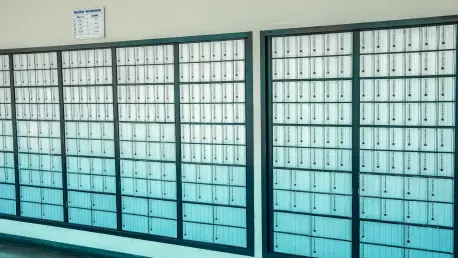In an era where the demand for reliable and sustainable energy solutions is at an all-time high, a major utility provider has stepped forward with a groundbreaking plan to transform the energy landscape in Minnesota. This innovative proposal introduces a 200 MW distributed battery storage network, a project poised to redefine grid reliability and support the state’s ambitious clean energy goals. Named CapacityConnect, this initiative targets completion by 2028 and promises to address peak demand challenges while paving the way for a cleaner, more resilient energy future. By integrating cutting-edge technology with strategic community partnerships, the project not only aims to modernize infrastructure but also serves as a potential model for utilities nationwide. As energy needs continue to evolve, such forward-thinking strategies highlight the critical role of innovation in balancing operational demands with environmental priorities.
Pioneering Grid Modernization in Minnesota
Strategic Deployment of Distributed Storage
The heart of CapacityConnect lies in its plan to deploy modular battery systems across Minnesota, ranging from one to three MW in capacity, at various commercial, nonprofit, and industrial locations. These compact, shipping container-sized units will be fully owned and operated by the utility, ensuring seamless integration into existing grid operations. A key feature of this approach is the ability of these batteries to charge during off-peak hours when electricity prices are low and discharge during high-demand periods, effectively stabilizing supply and demand dynamics. Host sites participating in the program will receive direct financial incentives, fostering a collaborative environment where local stakeholders play an active role in enhancing grid efficiency. This distributed model represents a significant shift from traditional centralized storage, focusing on localized solutions that directly address regional energy needs with precision and adaptability.
Enhancing Reliability Through Localized Solutions
Beyond operational efficiency, the strategic placement of these battery systems is designed to tackle specific grid challenges while providing critical backup support to communities. By situating storage units close to demand centers, the initiative aims to reduce strain on the grid during extreme weather events and defer the need for costly upgrades to substations and transmission lines. This decentralized approach not only improves reliability but also promotes equitable access to clean energy benefits, ensuring that diverse communities across Minnesota can reap the advantages of modernized infrastructure. Moreover, the project aligns with broader grid modernization objectives, building a foundation for a more resilient energy system capable of withstanding future disruptions. As electricity demand continues to rise, such targeted interventions are essential for maintaining stability and supporting sustainable growth in the region.
Aligning with Clean Energy Goals and Community Benefits
Supporting Statewide Energy Targets
CapacityConnect is a vital component of the utility’s Upper Midwest Energy Plan, which seeks to achieve 600 MW of storage capacity by 2030, with this 200 MW network marking a substantial step toward that target. The project employs a hybrid strategy, combining small-scale distributed batteries with larger grid-scale solutions to create a comprehensive framework for energy management. This alignment with Minnesota’s clean energy objectives underscores a commitment to integrating renewable resources while addressing the intermittency challenges often associated with solar and wind power. By storing excess energy during periods of abundance and releasing it during peak demand, the network helps stabilize the grid and facilitates a smoother transition to cleaner energy sources. This initiative reflects a broader trend among utilities to leverage advanced storage technologies as indispensable tools for meeting ambitious sustainability mandates.
Fostering Economic and Social Impact
In addition to its technical merits, CapacityConnect prioritizes community engagement and economic growth through direct payments to host sites and a strong emphasis on workforce development. The program adheres to rigorous labor and safety standards, ensuring that local job creation remains a core focus of the rollout. This dual emphasis on technical innovation and social benefits sets the project apart as a holistic solution that addresses both immediate grid needs and long-term community well-being. Partnerships with organizations specializing in distributed energy resource deployment further enhance the initiative’s potential to scale effectively, creating a replicable model for other regions. By embedding social and economic considerations into its design, the project demonstrates how energy modernization can serve as a catalyst for broader societal progress, benefiting not just the grid but the people and businesses that rely on it every day.
A Blueprint for Future Innovation
Looking back, the proposal for CapacityConnect marked a pivotal moment in reimagining how utilities could approach grid challenges with distributed storage solutions. The collaboration with specialized partners and the introduction of innovative procurement models like Distributed Capacity Procurement showcased a readiness to treat distributed resources as integral to system planning. Reflecting on the initiative’s design, it became evident that its potential to defer infrastructure costs and mitigate peak demand pressures was matched by its capacity to inspire similar efforts elsewhere. As regulatory approval was sought, the project stood as a testament to the power of integrating operational goals with community-focused outcomes. Moving forward, stakeholders are encouraged to monitor the performance of such networks, advocate for supportive policies, and explore ways to adapt this framework to diverse regional contexts, ensuring that the lessons learned continue to shape a more sustainable energy landscape.









